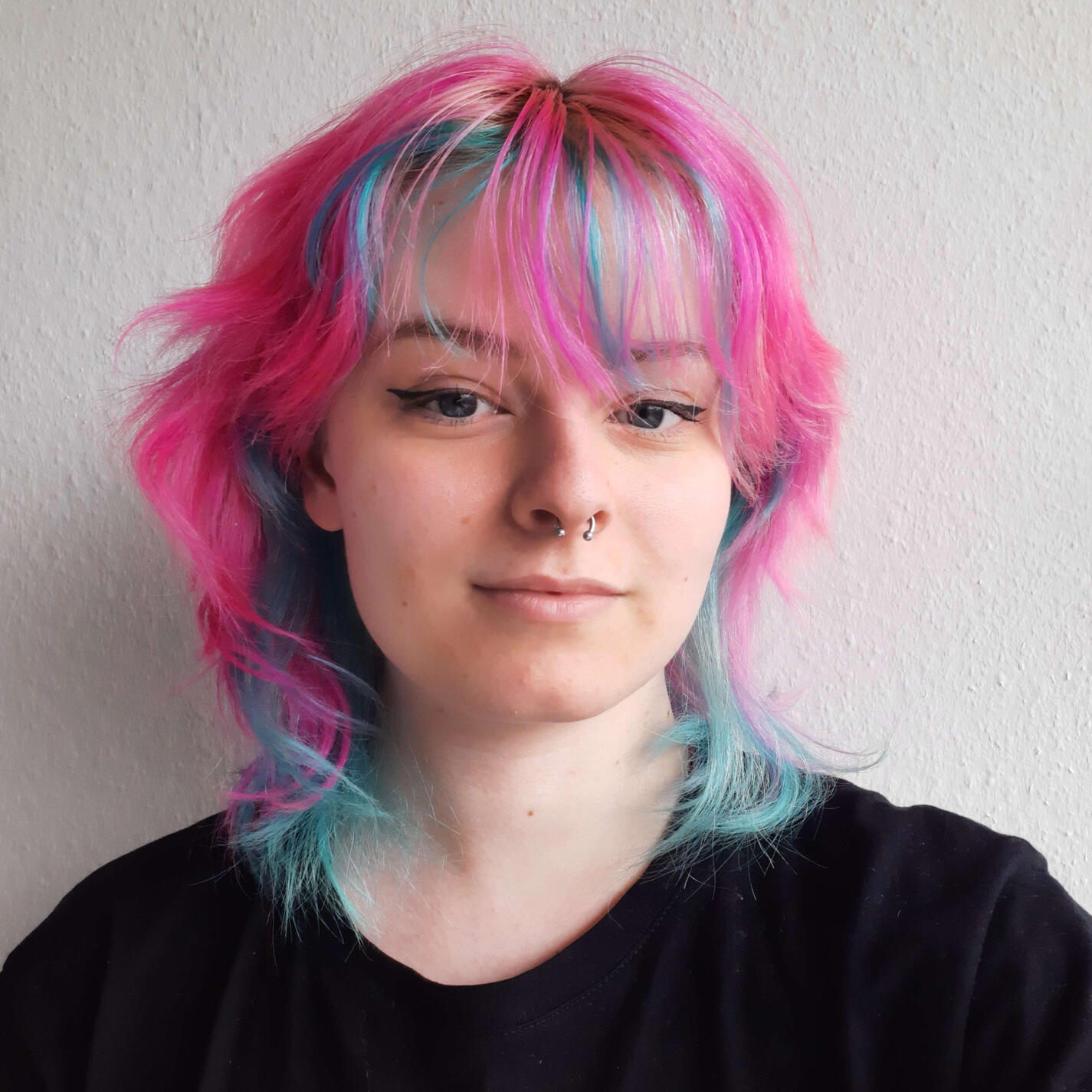
Recent Artworks
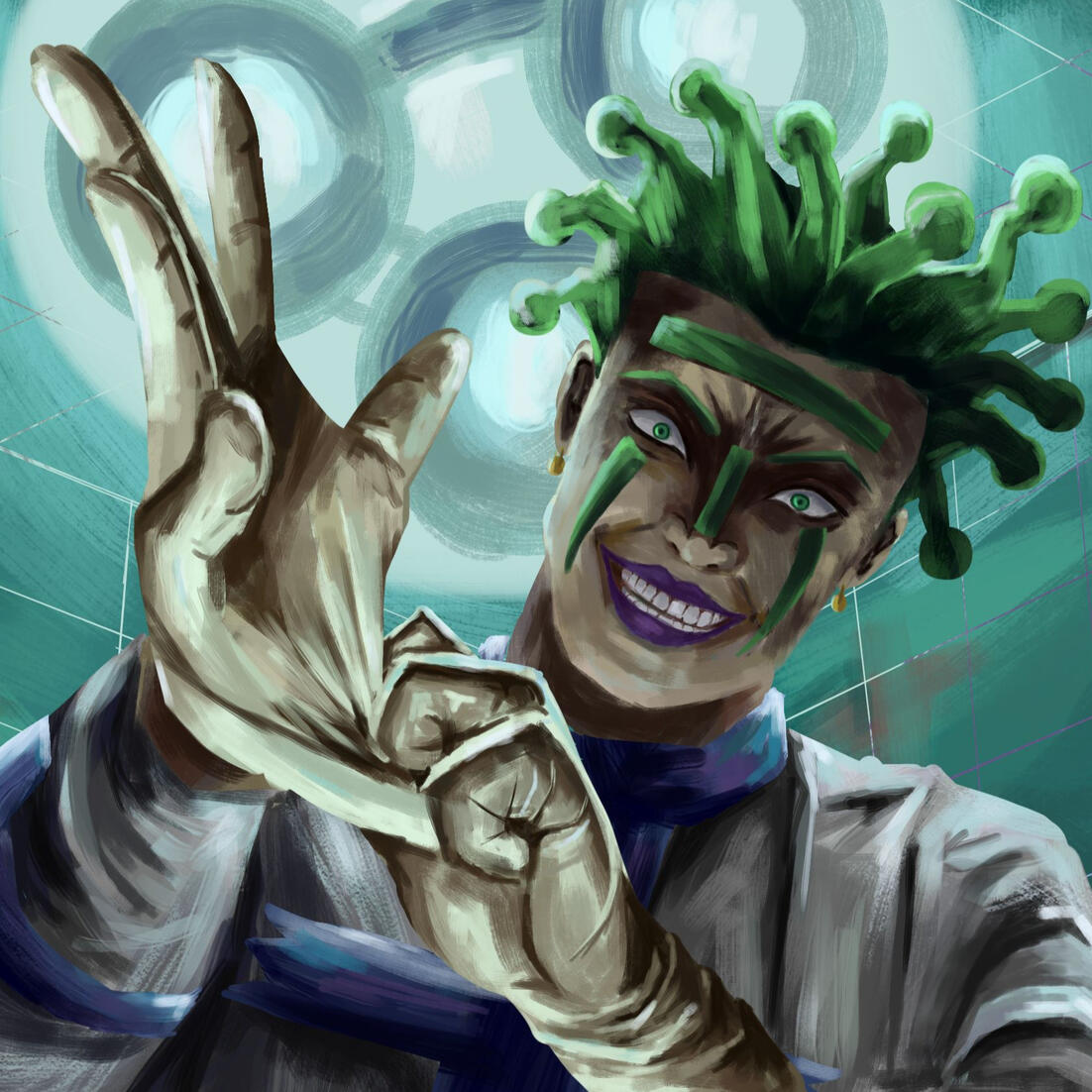
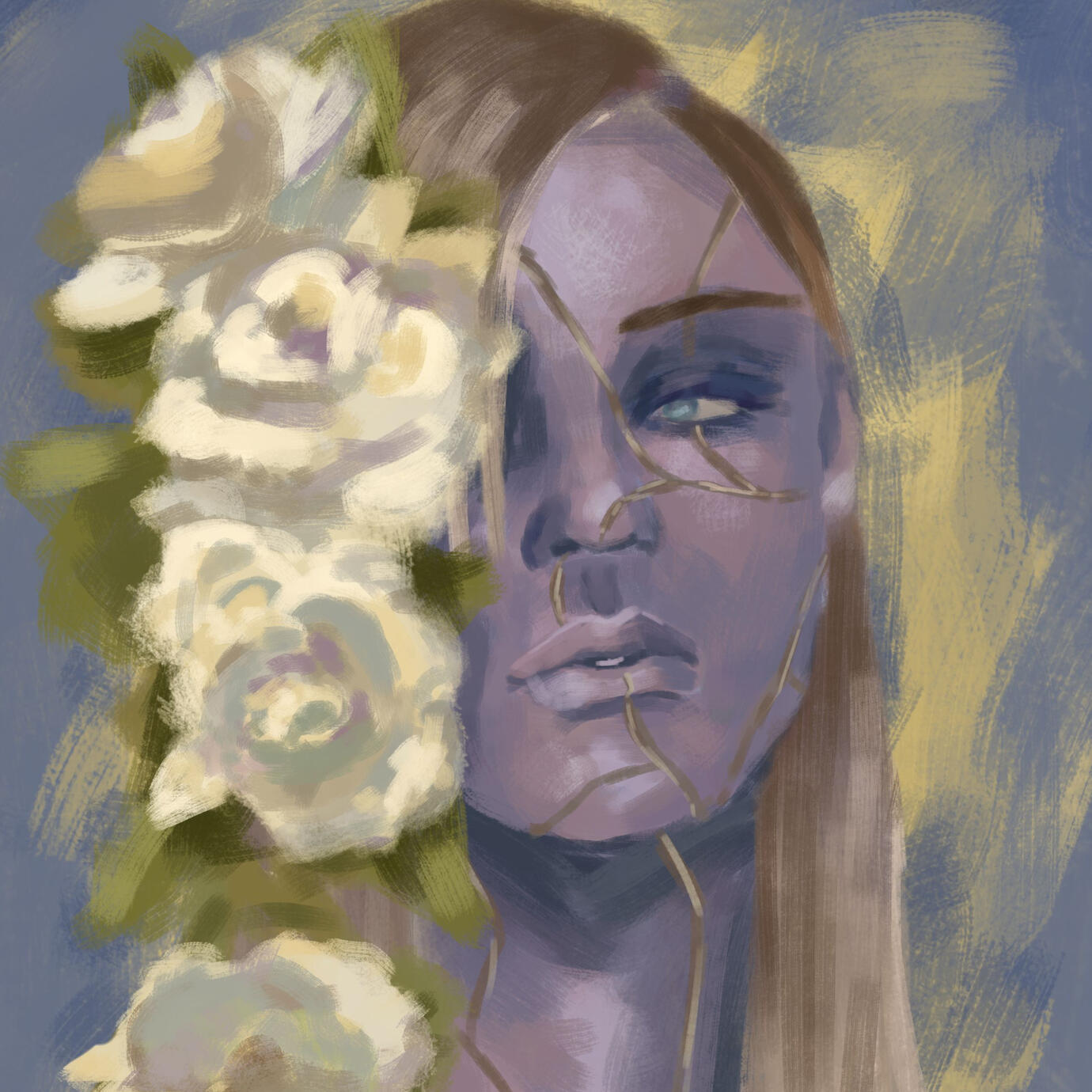
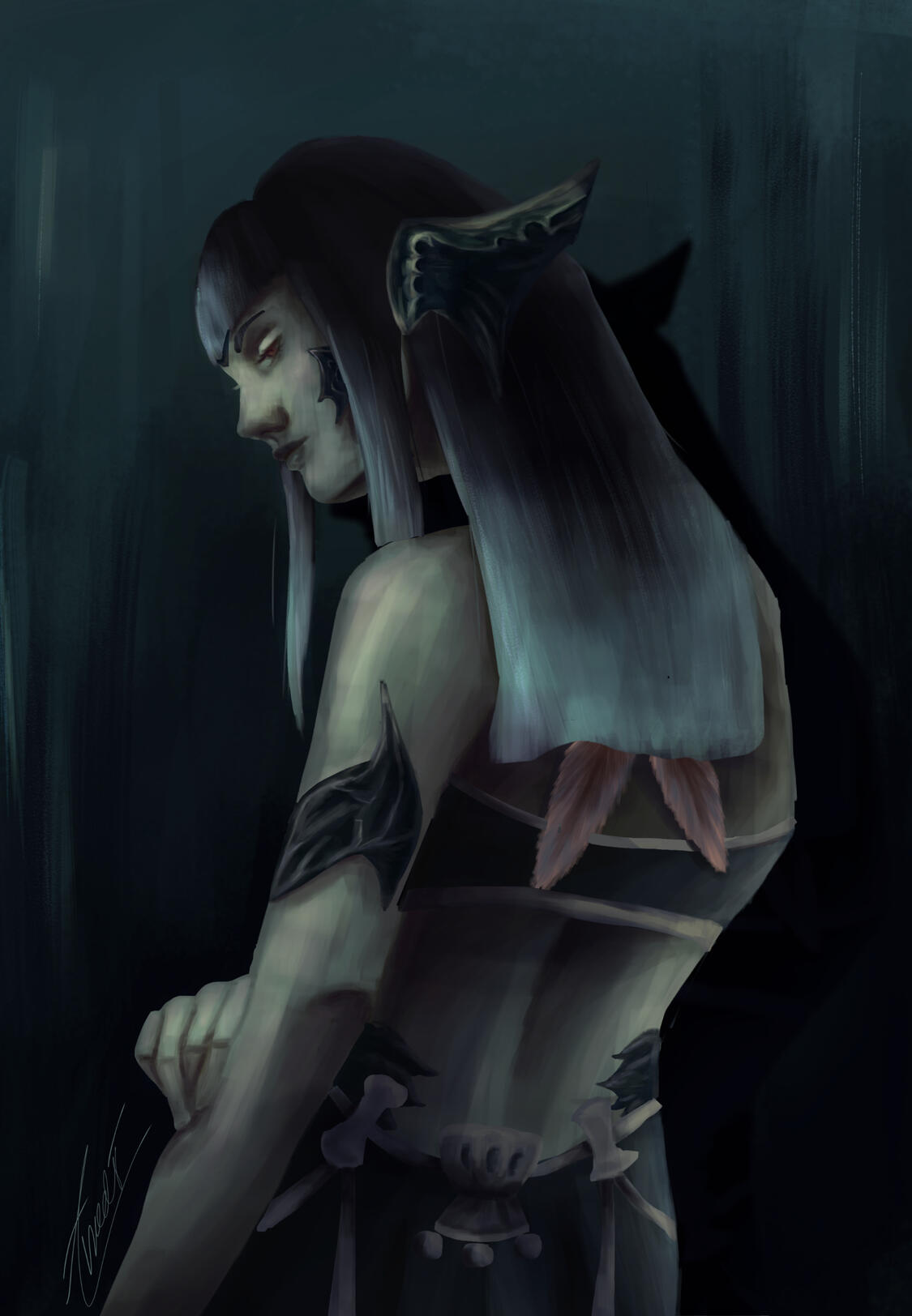
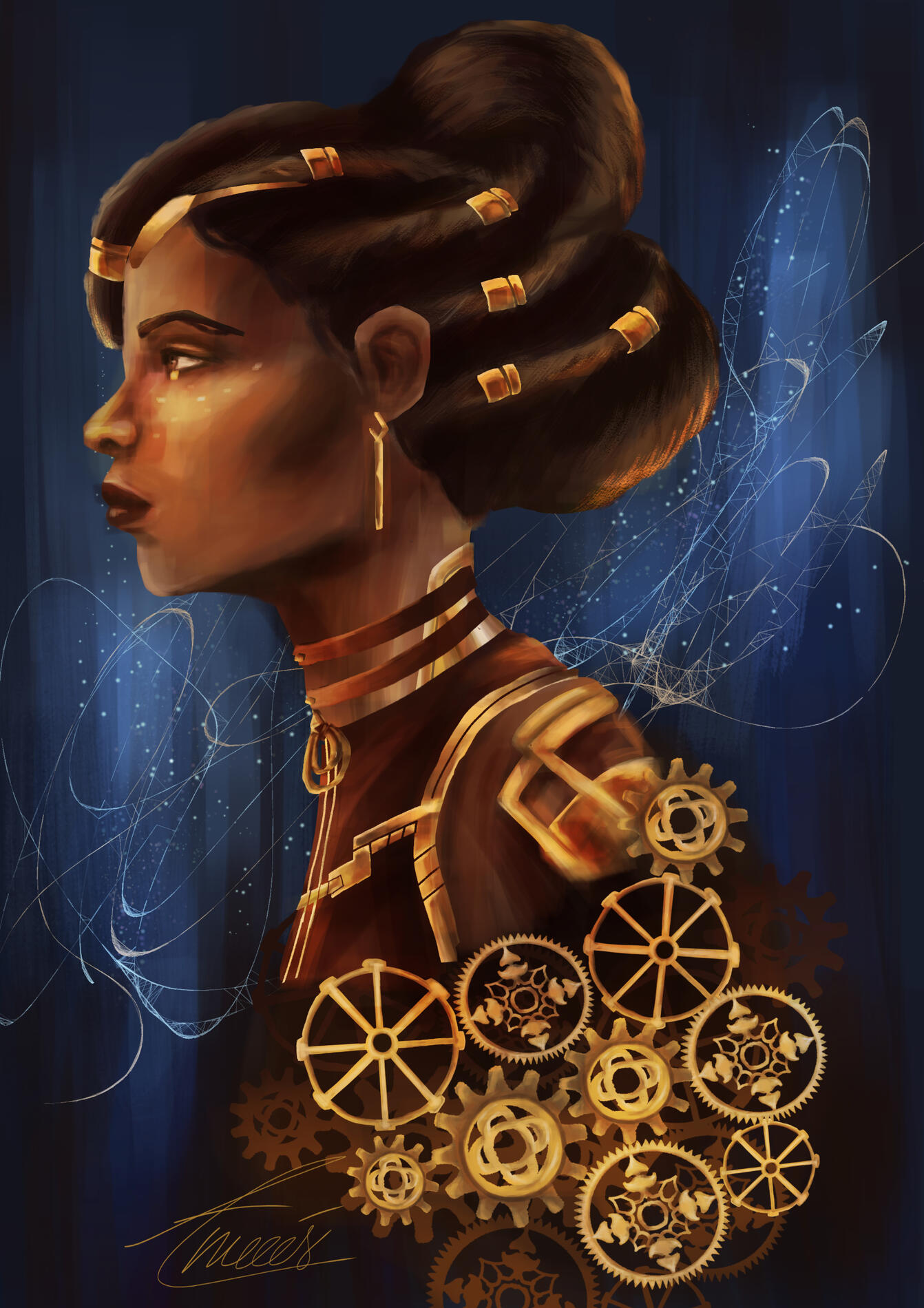
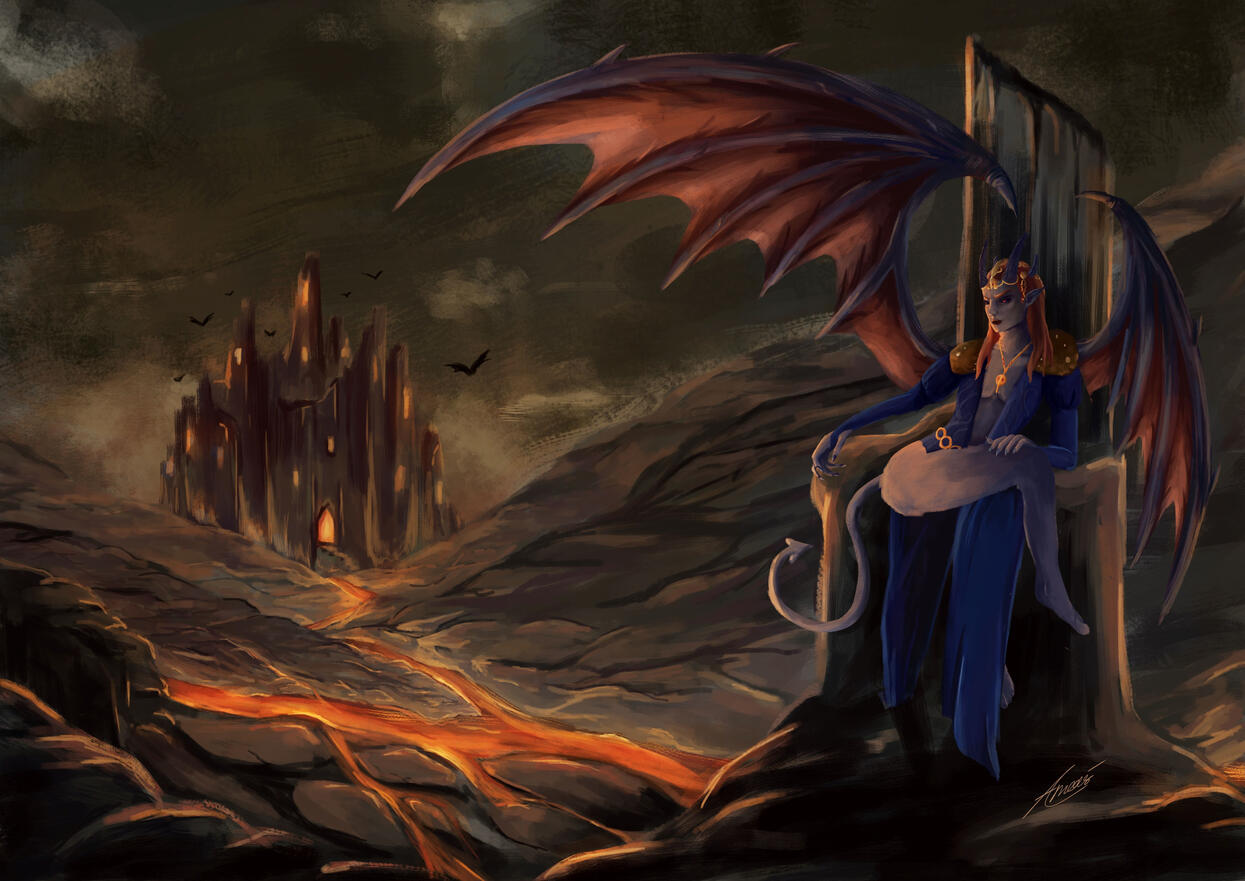
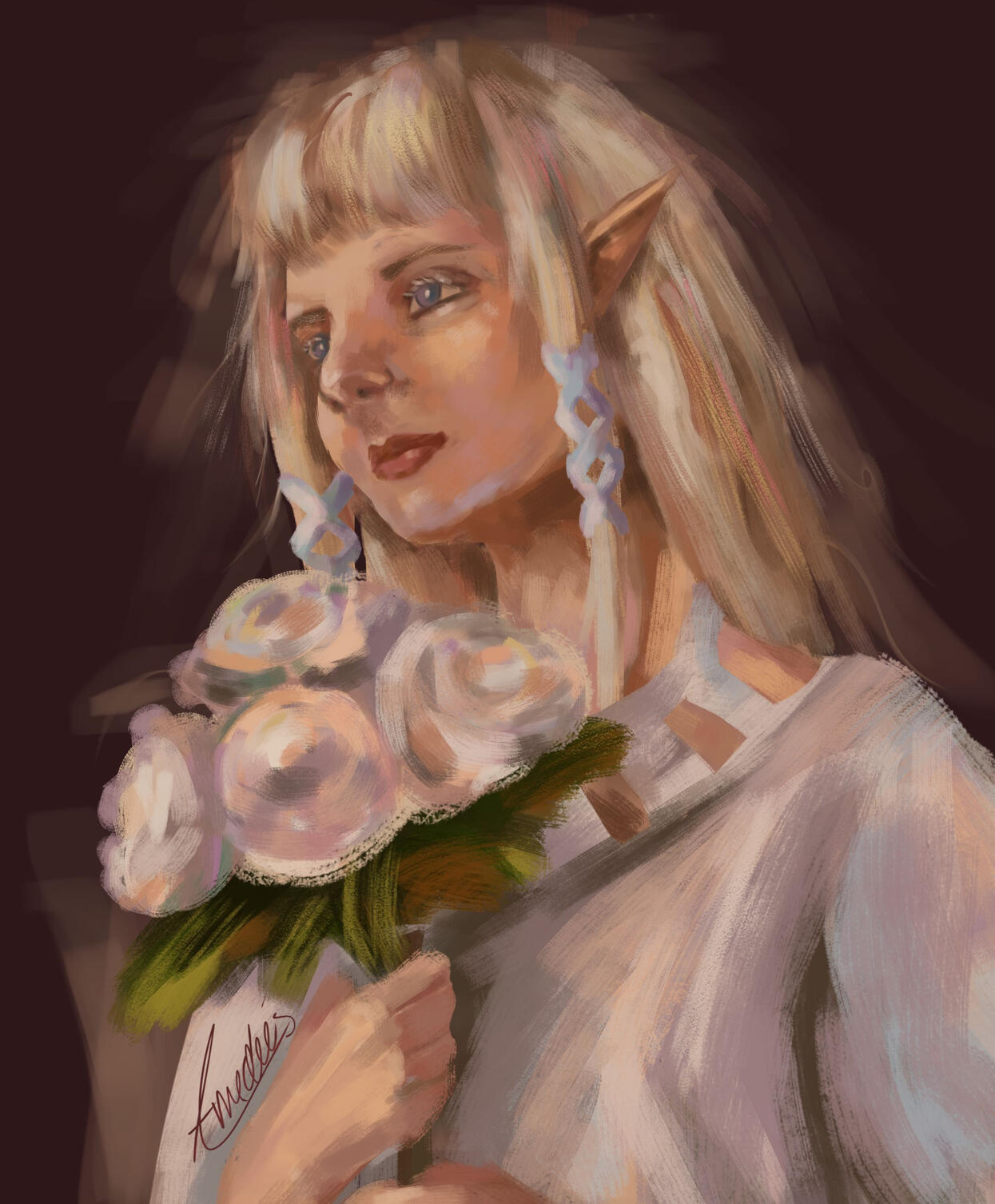
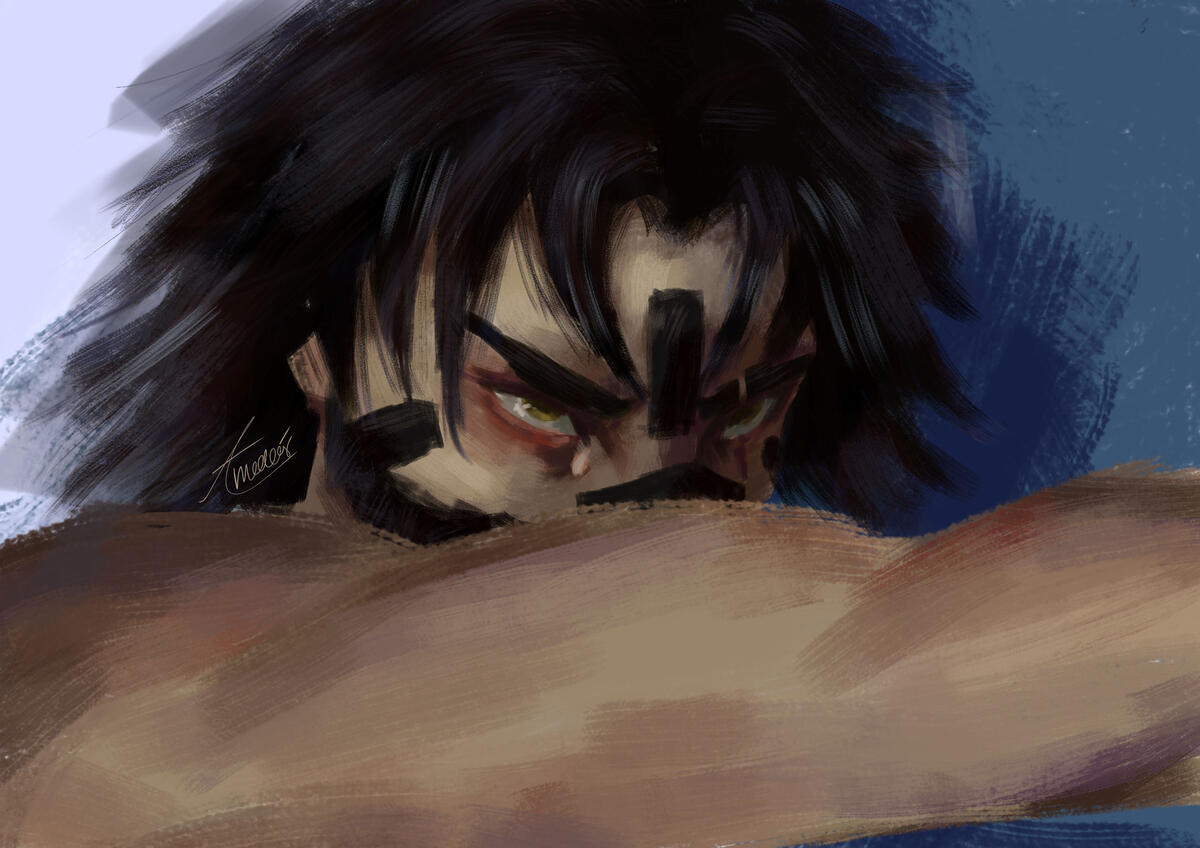
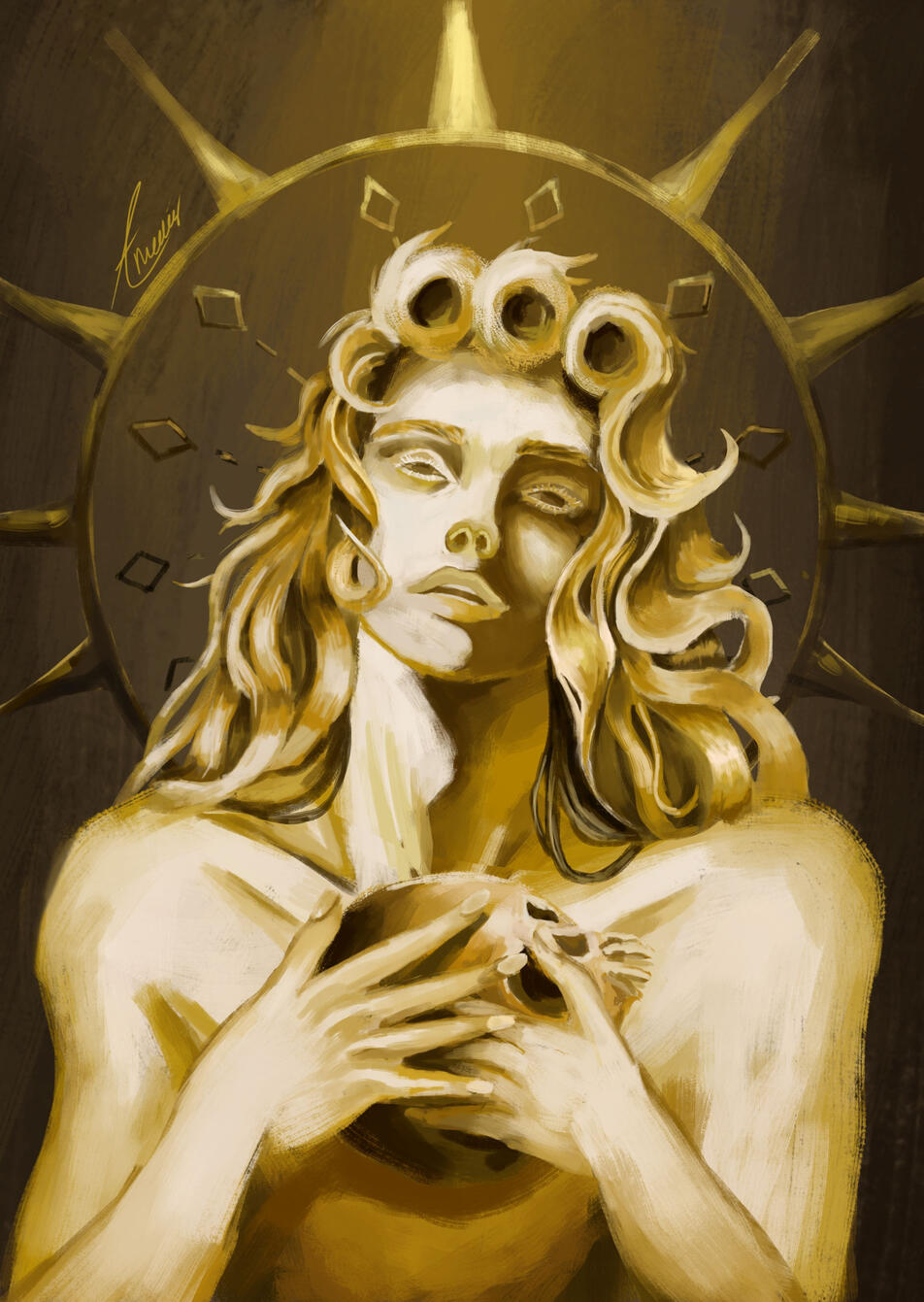
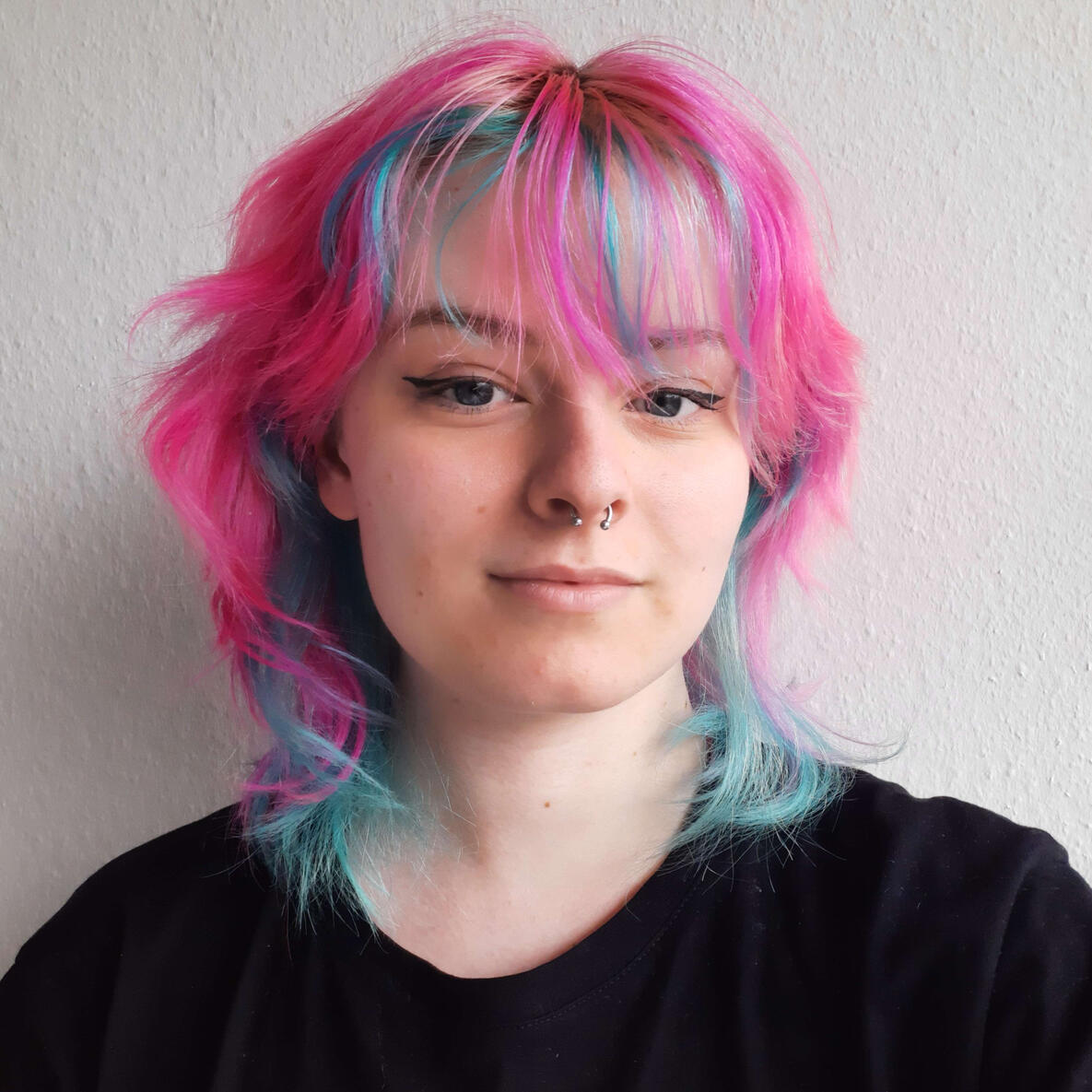
Olivia Falke
Hi there!Hearing that the Assassin’s Creed Unity in game model of Notre Dame helped rebuild the actual building after the fire, made me realize that video games can achieve so much more as one may expect. I want to be an active part of this exiting journey and create such games.
Currently, I am studying Game Design at the MD.H in Munich and am looking for new ways to grow my skills.
Board Game
As part of my university application I designed and created a board game.
You have broken into a building to steal an expensive pearl necklace. But the alarm is triggered! In panic, all the thieves tug greedily at the necklace, until it breaks. The pearls roll in all directions, and everyone snatches up what they can. Now it's time to go: Let's get out of here! Escape the police and take as many pearls as possible from your fellow fugitives!
In this board game, you have 45 minutes to play mini-games and use action cards to try to take as many pearls as possible from your opponent without losing yours. At the start of the game, none of your opponents know how many pearls the others start with. The exact number is only revealed at the end. The player with the most pearls at the end wins.

Finished Board

Finished Board
One player is responsible for the “safe”, which contains the complete number of pearls in the intact chain and symbolically stores the scattered pearls after the start of the game. During the course of the game, you can find pearls or steal more from your fellow players, which are then distributed from the safe. During the course of the game, the player in charge of the safe gives the players X amount of pearls depending on the situation. Only before the game starts does everyone take their own predetermined amount.
By playing mini-games and use action cards, which are marked with an “M” or “A” on the board, you can “find” pearls and get them from the safe or steal pearls from other players or lose them to them.The mini-games can involve single or multiple players and include simple classics such as rock, paper, scissors. Each card indicates what exactly is played to win more pearls or - if you're unlucky - to lose them! Some cards contain symbols of everyday objects that show what is also needed for some mini-games.
Action cards can also affect individual or multiple players and are cards that change the dynamics of the game.
Prototyp
The development of my board game started with a basic idea: it should be fun but also involve many classic game elements.
Some of my favorite games from my childhood inspired me, and I knew that it didn't have to be complicated to be fun.
There were many changes until I decided that players would have to go around the board multiple times. I wanted the mini-games and action cards to be varied and add dynamics to the rounds.
The prototype began with very simple means (for example: Dog poop bags as storage bags, toy beads as beads and index cards as playing cards). But even so, it was fun! It was tested and improved thanks to the willingness and feedback of my friends.
Once the rules and procedure had been established, the next phase could begin: creating the “look”. The playing area was painted, the dog excrement bags were replaced with small bags and the cards were designed and printed.
Visual Novel
As part of our Narrative Design assignment, we wrote a short visual novel in Renpy. It should include:
- Different endings
- Pictures
- Choices you can make
The story was about a knight who had to bring a princess to safety in the neighboring county.
I first started to organize the story with a flowchart that showed every option the player could take.
The game consists of very simple code written in Atom. It mostly consists of variables and if else clauses.

Start

Example Choices
Walking Simulator
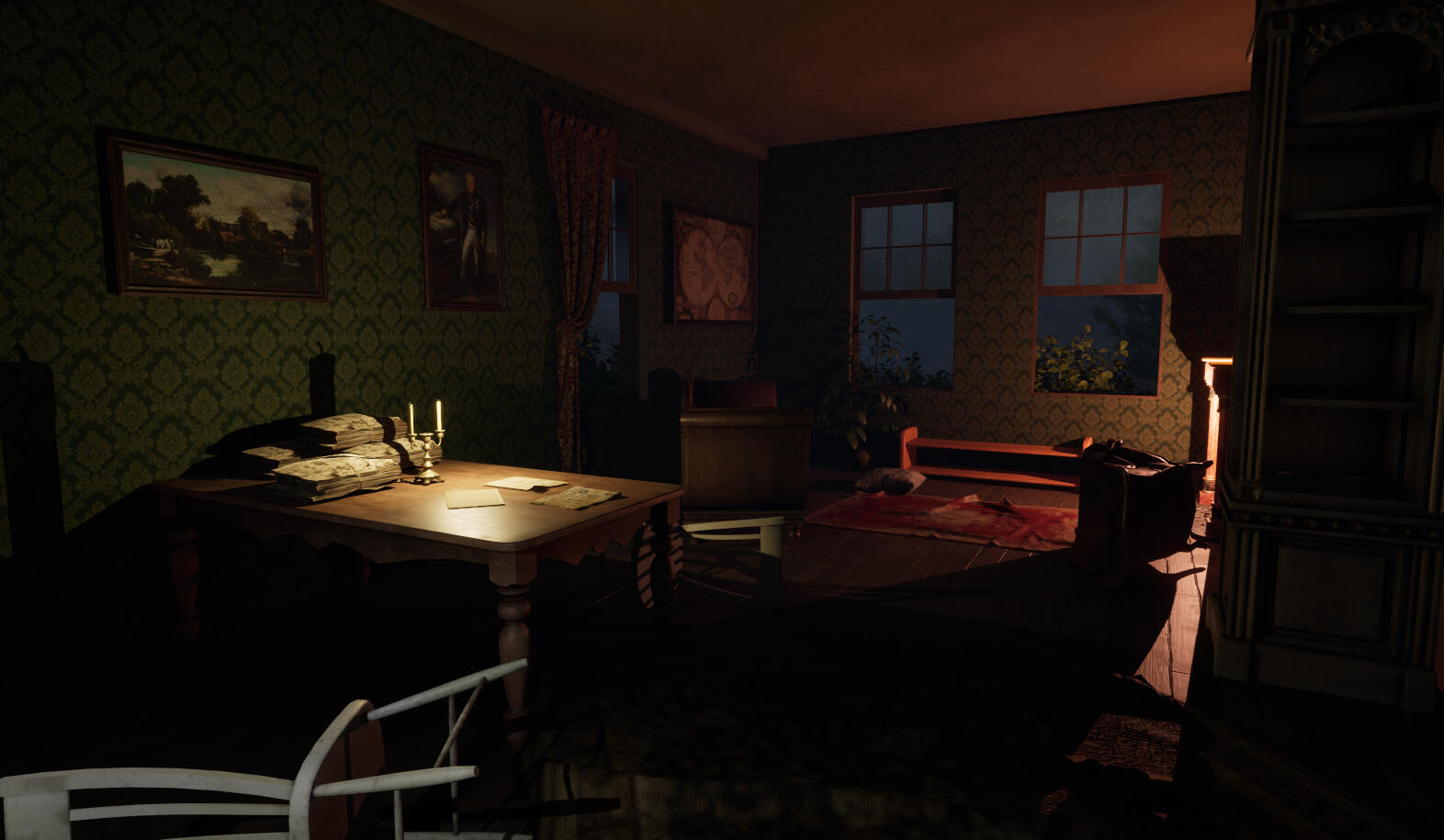
For this assignment, I had to create a Walking Simulator that included:
• A self made 3D Asset
• Usage of Light
• Puzzles
• Cutscenes
• Storyelements
With the story being such an important part, I focused on an interesting first chapter of a potentially longer game.
It was about the main character’s car breaking down on her way to her boyfriend, who hasn't been returning her calls. He lives in a house deep in a forest and it turns out he went missing. He was kidnapped by a strange cult who believe his house to be of significant value. The player finds out that he has gone missing during the walk from her car to his house.

First Sketch

First Blockout

Room Setup
In order to get into the house, you had to walk around it to the open back door. To guide the player, I used light that I placed at each corner of the house that reveals itself every time the player walks to the next corner.

First look at the house

Corner of the house
The main goal of this level was to find a way into the locked bedroom. The missing key can be found in the bathroom. I used light and assets to guide the player to the locked door first and then to the bathroom.
Lighting
Since my story happened during nighttime, I had to rely on light sources such as the moon and car headlights. I wanted to let the moon rays highlight the way the player needed to go. So right in the beginning I placed trees in the left and right corner to guide the player to the direction of the moon.
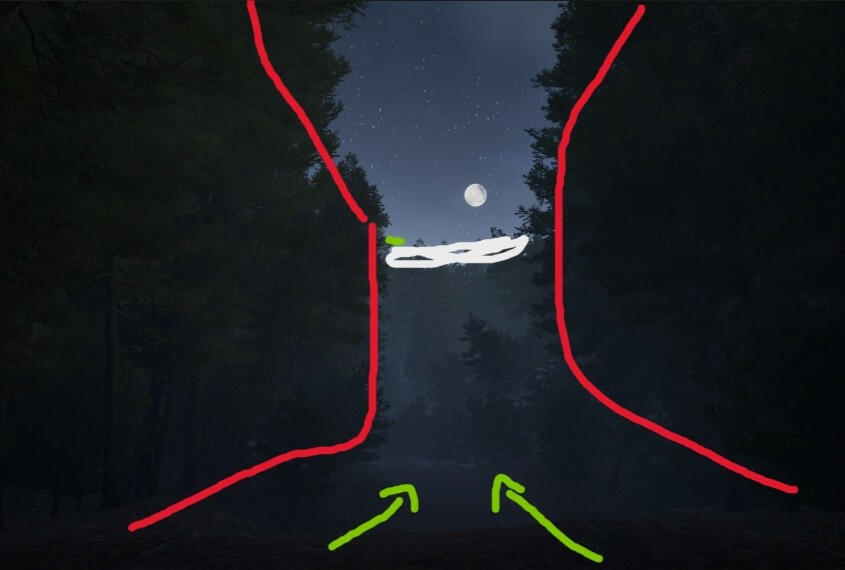
In order to not show the player the car, I placed two point lights at the edge of the cliff the player couldn’t walk up to. I wanted to let the players use their imagination without having to model a car. The placement of the pint lights guided the player to look into the direction of the moon.
Learnings
Since this was a university assignment, I was the only one working on it and responsible for the mistakes/learning I could take with me.
Having a solid concept makes the game better
The use of lighting in a walking simulator is essential, especially if its dark
An easy way of testing if the way from point a to point b is to speak the text out loud while walking to them
It is more exiting to walk around, if you can see where you are going to
Exhibit A
Night at the Museum meets Murder Mystery - A museum... a terrible murder... a series of suspicious paintings. Can you find the murderer before it's too late?Try and find out who killed a painting and sabotaged a new AI-image.Dive into a museum combining both traditional, hand painted and digital artworks in one setting.
Roles: Producer, Game Designer, Narrative Designer
Tools: Unreal Engine 5, Perforce, Jira
Team: 1 Programmer, 4 Artists, 1 Game Designer
Time span: Six Weeks + Pre-Production
Goals
Exhibit A was my second project, where I served as both a game designer and producer. Drawing from the lessons learned in my previous project, "Another One Fights the Dust," I wanted to build on the skills I learned previously and create a game that incorporated the use of AI-generated Images in a critical setting.
Game Designer
The concept of a murder mystery set in a museum originated from a collaboration between two colleagues and myself. Together we crafted a storyline centered around artificial intelligence within a museum setting.In my role as a game designer, my responsibilities included creating a cohesive plot and developing distinctive characters to inhabit the world we had envisioned. Given the museum setting, I took care to give each character and painting the traits and characteristics appropriate to artistic time periods and style from which they originated.
The artwork on the left served as the inspiration for one of our game characters, with modifications made to align with our game concept (see middle image). This character embodies a duality, symbolized by the yin and yang composition. The final image, depicted on the right, was created by our artist on canvas.
Layout
Creating the layout for the museum was another bigger part of my job. With a lot of trial and error I first came up with a simple paper prototype. I cut out colored paper that represented each painting, so I could easily move them as I worked on the timeline of the evening. The difficult part of creating the layout was that the paintings in exhibit a could only see what was directly in front of them and since a typical museum is constricted without walls hindering the visibility, I had to build small walls and obstacles. That was the only way I could create a pathway for the murderer without being seen.
After that, the art lead and I built the first block out in the Unreal Engine to test if the dimensions were right. This required a lot of communication on both sides, since a bit oddly shaped room still had to represent an authentic museum.
Finding Items
Regarding the gameplay mechanics, clues were strategically hidden throughout the game for players to uncover in order to solve the case. In the game's universe, the characters in the paintings were alive and had the ability to remove items from them or place them in others. Players could analyze paintings and extract crucial clues, such as the murder weapon, to progress in the game.
Such pieces (like the axe seen above) would then appear in the player’s journal, categorized either as a clue or a weapon.
Narrative Design
This project presented me with the opportunity to craft dialogue and storytelling for the first time. In Exhibit A, my task was to provide each painting with a distinct character solely through dialogue.
I envisioned the Devil’s character to possess a charming demeanor with a subtle touch of malevolence and playfulness, and for his English to have a sophisticated, slightly antiquated note.
Producing
As the producer my responsibilities included overseeing time management, setting milestones, and assigning tasks through Jira across all departments. From my last project I took away, that the Pre-Production is an essential part of creating a finished game, so as a Game Designer and Producer, I wanted to have as much ready as possible before the rest of the team started the production.
The preparation consisted of two meetings a week where I gave everybody updates about the Game Design and Story. Together with our programmer we used that time to build the first functioning prototype. Writing a Game Design Document was what I used most of my time for, as well as creating the asset list together with the Art Lead.

This is a short sample, with all the 3D, 2D and Sound Assets sorted by color priority.
Working with a familiar team, I knew where their strengths and weaknesses lie, with that in mind I could scale our milestones accordingly and create tasks in Jira I knew we could definitely accomplish.
Feedback
Creating a Detective Video Game is quite difficult, since it needs a lot of playtesting from as many people as possible. Early on in the production, I created a paper prototype of our story. The word document consisted of a short explanation about our paintings, the story, what each painting saw and what clues the player could find. The question in the end was: Who did it? With which weapon? And why?
This prototype we handed out to close friends and family who gave us a lot of feedback, what needed to be explained better and if it was too difficult, but the most important information they gave us, was that the “And why?” question was too difficult. I originally had three questions you needed to answer, because I wanted to prevent people from just guessing. But having a very difficult element that hinders the playing experience was not the goal of the three questions.
I decided to leave the third question out and rather have the player have to find out who it was and with which weapon, all within three attempts. After more playtesting in the later stage of the game, the gameplay felt much better, and the players could focus on two important questions rather than struggle with three.
The second important thing playtesting showed us, was that our sneak mechanic wasn’t working as intended. My goal was to be able to gain more information by sneaking to the paintings and eavesdropping.
It was originally planned that there was a yellow radius the player could sneak into, in order to gain more information. Sneaking into the red area (that would be the area the painting could see) would stop you from getting information. If the player were to walk around normally (also in the yellow area), they wouldn’t get the information.
During the many playtests, I noticed that nobody really understood what was happening and that they could sneak around like that. So, in order to still give the player hidden information, I obted for a plant you could hide behind that automatically puts you into an eavesdropping dialogue. The option to hide behind the plant was highlighted in a brighter color to show the player that they could interact with it. That made it a lot easier to understand the function.
Learnings
Since this was my second game I have ever worked on, I was still very open to every experience I could lean and there was a lot!
Good and detailed Pre-Production = better game in the end
A good Game Design Document helps everyone
Communication is key
Distribute work equally
Define an efficient Workflow for Artists and Programmer
Working with external people who specialize in something you are not is very helpful
Working with the Unreal Engine and Asset Packs
Working with Version Control (Perforce)
Another One Fights The Dust
Hate cleaning up? Stop feeling bad about procrastinating in real life and experience a sense of accomplishment by completing tasks in a game instead.Thanks to your help in Another One Fights the Dust, your conscience will come away squeaky clean as you tidy up and bring order to various virtual rooms.This game was a project I made in my second semester at the MDH.
Roles: Producer, Game Designer,
Tools: Unity, Git Hub, Trello
Team: 1 Programmer, 3 Artists, 1 Game Designer
Time span: Six Weeks
Producer
In my role as a producer for this project, I was responsible for overseeing a team of 5 individuals, managing timelines, setting milestones, and delegating tasks efficiently using Trello across various departments.
Game Design
Taking inspiration from the game "Unpacking", I developed a unique concept to differentiate our project. One key feature I implemented was the "To-Do List" mechanism, allowing players to choose the task they were working on, like throwing out trash.
To add a level of challenge, we incorporated items hidden under others, prompting players to be thorough in order to complete all tasks on the list.
Room Design
In my role, I was responsible for creating room layouts and selecting furnishings, including elements such as debris, trash, and miscellaneous items. Collaborating closely with the artistic team, we collectively defined the overall design concept and color palette.
Learnings
Since this was my first game I designed and produced with no prior experience, there was a lot that went wrong, but a lot I could learn from.
Having a finished Game Desing Document in the Pre-Production helps with not having to cut out content later
Set a realistic goal for a project that includes the base mechanics, everything that can be added after is great, but there needs to be a good base to build on
The base mechanics need to be fun
Trying to have a prototype as soon as possible
Set realistic milestones
The game design document needs to be understandable for all departments
There is no shame in asking others for help if you don’t know how to do something
Why Won't You Get A Job?
Scared of that job interview?
Why not practice beforehand?
This game is about forming correct sentences during a job interview.
Don't mess up, or you won't get taken!

Title Screen

Forming Sentences
Roles: Game Designer, Wrtiter, Artist
As part of a Game Jam, we made this game in 42 houres as a team of 7 people.
Vacation Invasion
A 3D multiplayer hide and seek/prop hunt on an idyllic, southern vacation island.
Mass tourism is causing problems for the locals, so they set out to chase away the tourists, who are hiding as objects on the island.Slip into the role of the locals to hunt down the tourists, or test your hiding skills as a tourist and escape the locals' slippers!

Hiding Prop

Seeker aiming at prop
Rolls: Producer, 3D Artist
Tools: Unreal Engine, Blender, Substance Painter, Jira
Team: 1 Programmer, 5 Artists, 1 Game Designer
Time Span: 6 Weeks
Producer
My responsibilities included overseeing time management, setting milestones, and assigning tasks through Jira across all departments. With the experience of two projects, I effectively lead a team of 7 to a finished game.
3D Artist
The game consists of three maps in total, meaning us artists produced assets for all three of them. To separate them, we had houses you couldn’t go into as boarders.
For six houses I drew concept art and made the 3D model in Blender.

Concept Art

Finished 3D Model
To make our low-poly island more alive, I made a bunch of plants, ranging from trees to indoor plants.

Palm Tree

Lemon Tree

Indoor Plant
Blockout
My biggest task was creating the Blockout in the Unreal Engine. I started off with the sketch of our Game Designer and drew the rough shape on a landscape plane. From there I could adjust the size of the map and start creating buildings with the cube grid tool.

Rough Shape

Finished Blockout
After making it, I replaced everything with the assets for the game.

First few assets in the game

Top Down View
My final task was creating low poly water and a new skybox. I blueprinted a material giving a plane that “water look”. The skybox I made with a sphere and an image of a low poly/cartoon-like sky and placed the world inside of it.

Fake Sky

Finished Island
Learnings
Over the course of the games, I have made thus far, I still got to learn many new things about making games, such as:
The more you test, the better the game is going to be
Having predetermined names for all assets in the Unreal Engine
Paying more attention to the scaling of assets
Building the game regularly prevents stressful problems
Working with Jira and having regular meetings helps everyone be on track
Bubbler
Ever dreamed of playing a social media algorithm? Then this is the perfect game for you!
As part of the Global Game Jam 2025 my team of 6 made this game in about 48 hours.
Theme: Bubbles
Bubbler is a drag and drop style game where you need to combine tweets to a social media bubble and feed that bubble with the right hashtags. At the same time, you have a timer that counts down. By assigning the right hashtags to your bubble, you gain a few seconds of extra time to keep playing, if you assign the wrong one, you lose time.You will need to skim the text and look for similarities amongst the hot takes and unpopular opinions. New posts and hashtags will keep appearing until you have no more time left and you lose.
























































